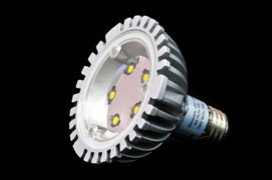Different colour LED light influences layer production

Artificial lighting is one of the most powerful management tools available to commercial layer producers. It allows anticipating or delaying the beginning of laying, improving egg production, and optimising feed efficiency.
A study at the Federal University of Grande Dourados, Brazil aimed at comparing the performance of commercial layers subjected to lighting using different LED colours, and standard incandescent lamps.
The study was carried out inside a layer house, which was divided into isolated environments in order to prevent any influence from the neighbouring treatments.
In total, 360 Isa Brown layers, with an initial age of 56 weeks, were used in the trial. The following light sources were used in the treatments: blue LED, yellow LED, green LED, red LED, white LED, and 40W incandescent light. Birds in all treatments were subjected to a continuous lighting programme, and they were fed a corn and soybean meal-based diet. A totally randomised experimental design was applied, with 24 treatments (6 light sources and 4 periods)and with three replicates.
Egg production (%) was different among treatments, with the best results obtained with red LED, white LED, and incandescent light sources. Egg weight, feed intake, and internal egg quality (albumen height, specific gravity, and Haugh units) were not influenced by the light source. The replacement of incandescent light bulbs by white and red LED light bulbs did not cause adverse impact on the egg production.
Source: Rodrigo Garófallo Garcia and co-workers, Federal University of Grande Dourados, Brazil
Proceedings of the 2014 International Poultry Scientific Forum, Atlanta, GA, USA












